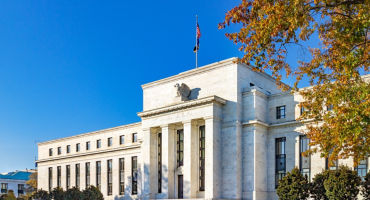As widely expected, the Federal Open Market Committee (FOMC) raised the target federal funds rate by 25 basis points (bps), to a range of 4.50% to 4.75%, at its February meeting. The FOMC made no changes to its plans regarding the ongoing reduction of its balance sheet, which began in June 2022.
In the FOMC’s statement, the Committee noted that inflation “has eased somewhat but remains elevated” and echoed its previous assessment that “ongoing increases” to the target rate will likely be appropriate.
During the post-meeting press conference, US Federal Reserve (Fed) Chair Jerome Powell enthusiastically noted that disinflation has begun without moderation in labor market strength. He expressed optimism that disinflation may continue without a material increase in unemployment or a substantial slowing in growth. Chair Powell dismissed concerns about divergence between the Committee’s forecasts for interest rates and futures market pricing, suggesting that the difference was due to alternative outlooks on the pace of disinflation. He also allowed for the possibility of decreases in the target range this year should inflation fall more quickly than the Committee thinks it will.
The US bond market interpreted Chair Powell’s remarks as quite dovish, pushing yields on short-dated Treasury securities lower.
Powell shrugs off recent easing of financial conditions
The minutes of the December 2022 FOMC meeting suggested that the Committee was worried about loosening financial conditions, noting “an unwarranted easing in financial conditions, especially if driven by a misperception by the public of the Committee’s reaction function, would complicate the Committee’s effort to restore price stability.” By many metrics, financial conditions have indeed eased since December, and the decline in interest rates following the Fed’s press conference yesterday will likely contribute to further easing of financial conditions. However, Chair Powell essentially dismissed questions about such easing, instead focusing on the longer-term tightening of conditions over the last year. The question for markets, then, is whether easing is “warranted” given the actual data.
The US economy is showing clear signs of slowing…
Since December, both inflation and wages have moderated and may continue to do so amid recent slowing in real growth indicators. The December CPI and core CPI prints were 6.5% and 5.7%, respectively. Both manufacturing and services ISM data have been below expectations. Additionally, consumer spending and retail sales have cooled. And importantly, average hourly earnings in December dipped to 4.6%, from 5.0%. Temporary employment, which is a useful leading indicator of labor market strength, has also declined.
…but it could still surprise to the upside
Despite the slowing, we still see signs that the US economy could surprise to the upside, and should growth prove more robust than anticipated, the Fed may need to increase interest rates more than is currently priced into the futures market. Initial jobless claims have been below expectations every print since December’s FOMC meeting, while the unemployment rate has declined from 3.7% to 3.5%. Some growth numbers have also been better than expected, including fourth-quarter GDP (2.9%). Data related to the housing market and indicators of consumer sentiment have generally printed above consensus as well. Finally, the reopening of China’s economy appears to be proceeding apace, which may put upward pressure on global inflation and growth.
Balance sheet on autopilot, no concerns about reserve scarcity
The FOMC is reinvesting Treasury and mortgage-backed securities (MBS) up to caps of $60 billion and $35 billion, respectively. There has been speculation that balance-sheet reduction may end earlier than previously anticipated due to declining bank reserves, which are important operationally to the Fed’s implementation of quantitative tightening. As of January 26, reserve balances with Fed banks were around $3 trillion, down from a peak of nearly $4.2 trillion in the third quarter of 2021. Likewise, take-up at the Fed’s overnight reverse repurchase facility has increased to over $2 trillion, after being used very little prior to the second quarter of 2021.
Chair Powell gave no indication yesterday that the Fed is concerned about reserve scarcity, leading me to believe the FOMC is unlikely to alter balance-sheet normalization in the near-term. This is particularly true with MBS running off the Fed’s balance sheet at a pace of about $20 billion a month since September 2022, well below the maximum implied by reinvestment caps. This may mean balance-sheet reduction has put less downward pressure on home prices and shelter costs than previously thought.
Final thoughts for investors on Fed policy
The ongoing normalization of the Fed’s balance sheet, which swelled during the height of the COVID crisis, is likely to progress as planned in the coming months, and the FOMC will probably continue hiking interest rates until it sees sustained evidence of disinflation, including decelerating inflation in the services sector. Although slowing inflation, labor market strength, and better-than-expected growth impulses are welcome, we believe it is possible that the market narrative has moved ahead of the actual data with regard to the hoped-for “soft landing” economic scenario. By its own admission, the FOMC still has some work to do to go to get inflation back down to the Fed’ target range — and if history is any guide, that’s going to be tough to pull off without tipping the US economy into some form of recession.




















